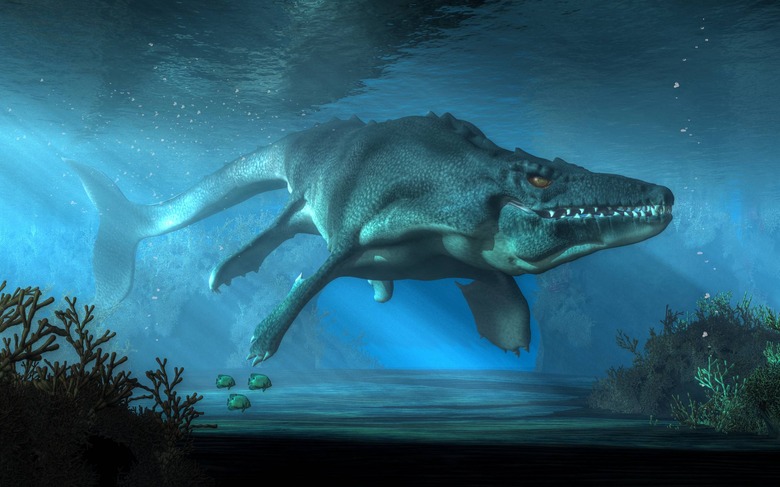Exciting New Species Of Mosasaur Might Have Been A Forgery, Researchers Claim
Scientists were beyond excited when miners discovered the skull of a shark-toothed sea predator that swam alongside dinosaurs. The fossil was classified as Xenodens calminechari, a supposed new species of mosasaur. But as it turns out, this jaw-dropping find might be a forged fossil, crafted not by nature but by human hands.
The fossil in question came from Morocco's phosphate mines, a treasure trove of mosasaur remains. With blade-like teeth similar to those of sharks, Xenodens calminechari was initially hailed as a carving machine that feasted on large prey.
But when paleontologists like Henry Sharpe of the University of Alberta took a closer look, they noticed something fishy. Mosasaurs have a neat anatomical rule: each tooth corresponds to a specific pit in their jaw. However, this fossil broke the rules, with four teeth crammed into two pits, which could point to it being a forgery.
Upon further inspection, the teeth appeared glued onto the jaw in awkward positions, raising suspicions that someone had tampered with the fossil to make it more marketable. The answer to why is simple, unfortunately. Money. Fossils, especially ones as dramatic as a shark-toothed mosasaur jaw, fetch high prices in private markets.
A broken bone won't sell as well as a complete jaw with pristine teeth, so a seller might decide to "enhance" fossils to boost their value. This practice isn't new. Forged fossils often involve sculpting fragments of bone, gluing them together, and embedding the result in a mixture of sand and adhesive that mimics natural rock.
While it might fool a casual collector, trained paleontologists (and CT scans) can usually uncover these clever deceptions. In fact, researchers recently uncovered a fossil forgery that has been studied for over 100 years.
Experts have long emphasized the need for rigorous scrutiny, especially with fossils coming from commercial markets. Countries like Canada regulate private fossil sales to minimize forged fossil risks, but such rules are absent in many fossil-rich regions.
Sharpe and his team hope the Xenodens calminechari fossil will undergo CT scanning to settle the debate and determine whether it's actually a bizarre new species or just an imaginative forgery. Until then, though, there are at least some suspicions that this fossil find isn't as genuine as some would lead us to think.
